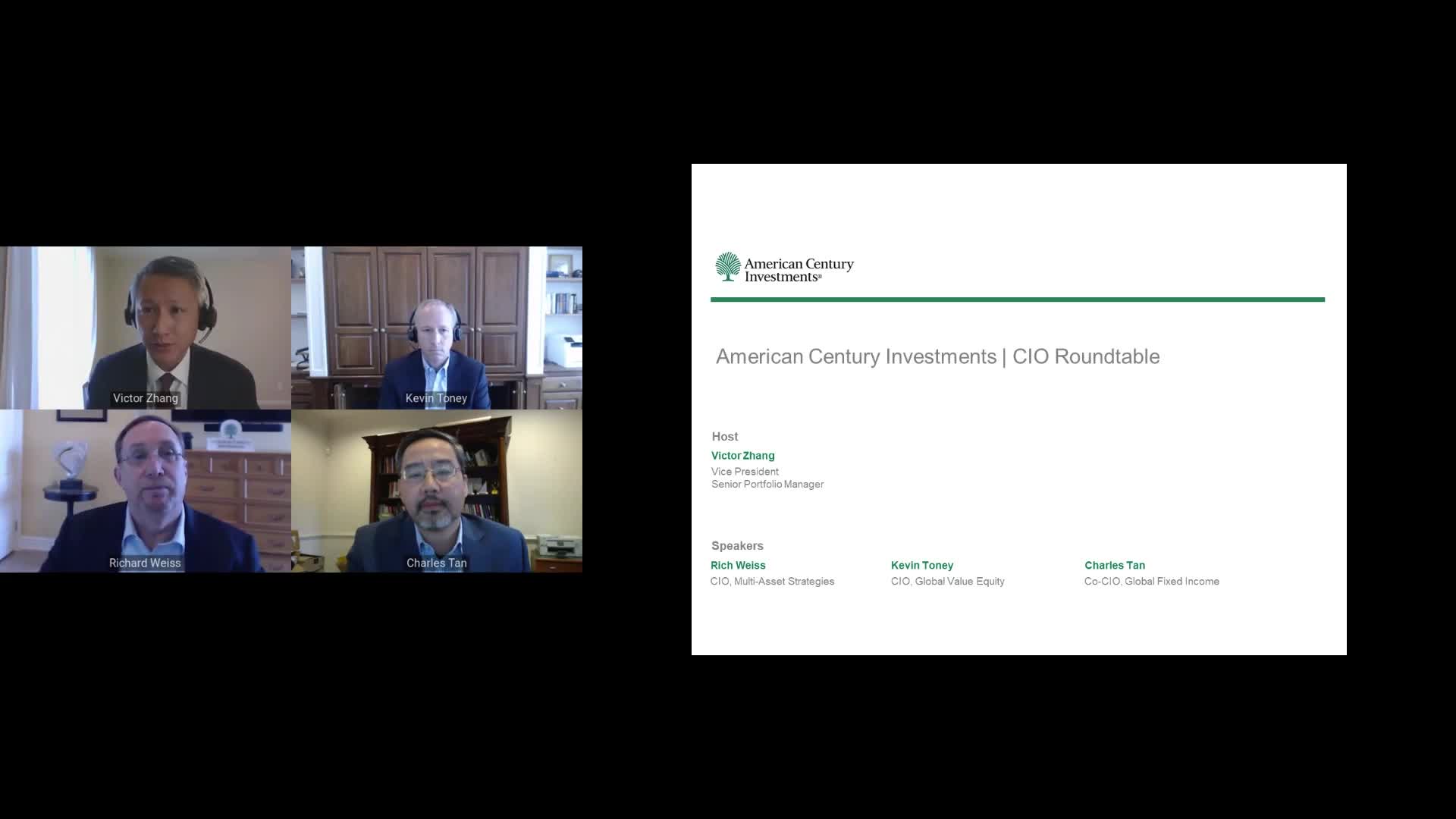CIO Roundtable Navigating Market Regime Change

The message from four of our CIOs is clear: Don't rest on 2021 laurels. What flourished last year experienced a sharp reversal in January. Our investment professionals believe it’s a sign that repercussions from pandemic-driven economic and market dynamics are taking hold. This new environment ushered in by central bank tightening will be marked by higher inflation, interest rates and volatility.
With the extraordinary amount of monetary and fiscal support injected into economies, many investors took advantage of the risk-asset rally throughout last year. This year, however, we think that becomes the key risk. How do we manage our asset class exposures across fixed income and equity as stimulus fades away?
Hear our CIOs’ thoughts on some of the most meaningful changes they expect will move markets, asset classes and sectors. Read key takeaways from the replay below.

Key Takeaways
New Paradigm for Inflation and Interest Rates
Inflation: Our view is that the low inflation regime of the past 40 years is over. It’s now a new paradigm where inflation will be structurally higher.
Interest rates: The economy historically has suffered some collateral damage when the Fed fights inflation. That’s why we think a slowing economy will limit the rise in Treasury yields. Moreover, a 10-year yield around 2% will likely attract international buyers, which also can help contain the rise in yields.
What to Do About Fixed Income
Look back no further than January for the case for fixed income yet again. It’s clearly still an effective diversifier—even in a rising rate environment. Yet the new environment may warrant adjustments.
Credit spreads: It’s no longer a safe carry environment in our view. We think credit spreads will widen this year and expect the high-yield spread to trade in a range between 300 and 350 basis points. With the Fed tightening financial conditions, a higher level of volatility is unavoidable, but we don't anticipate major credit market dislocations this year because credit fundamentals remain strong, corporate earnings and cash flow generation are still solid, and default rates are likely to remain low over the next 12 to 18 months. That said, beta is out, credit selection is in.
Short duration and inflation protection: We suggest considering an underweight duration. Bank loans, CLOs and other floating rate instruments are typically good additions to build a shorter-duration portfolio. We also suggest a strategic overweight to inflation relative to the benchmark through TIPS or inflation swaps.
Securitized sector: As rates go higher, mortgage risk goes higher, so consider an underweight in mortgage-back securities because they will be vulnerable to extension risk. Keep in mind that the Fed will start to unwind its large balance sheet, which also might create headwinds for MBS.
Corporate bonds: Broadly speaking, we like triple-B corporate bonds in the investment-grade space in sectors with less event risk and are cheap to our own spread targets.1
Time to Take Bigger Step Outside U.S.?
We're seeing economic deceleration globally but at disparate rates. Notably, the U.S. may not lead the global pack this year, either in dollar or local terms. Japan and Germany, for example, are widely expected to accelerate in terms of economic growth this coming year. However, there are major economies that are likely to grow less than the U.S. Therefore, if you haven’t tightly managed your exposures, we think it's important to reassess your geographical diversification.
Powerful Reversions in Style and Size
Growth versus value: So far this year, we've seen a strong reversion in value versus growth. We think there’s still a ways to go given that the starting point was so extreme. We believe the prospect of higher interest rates is not only repricing the valuation of growth stocks but also reaffirming the benefit of sustainable earnings, steady cash flows and quality balance sheets. It may be beneficial to reevaluate value and growth exposures and lessen reopening exposure while adding to high-quality value stocks throughout 2022.
Types of stocks: An interesting observation is the reversion we’ve seen in the type of stock that has done well in the cheap versus expensive parts of the market, which may have contributed to volatility. Companies with high return on tangible assets were high-quality companies, which significantly outperformed in the expensive third of the market but underperformed in the cheap third of the market. Similarly, low volatility stocks did particularly well in the expensive third of the market but underperformed in the cheap third of the market.
Small cap versus large cap: Valuation metrics certainly appear stretched, strongly leaning in favor of small-cap stocks.
What About REITs?
Given their strong performance over the last couple years, the yield advantage of real estate investment trusts over other sectors has narrowed significantly and valuations are extended. Additionally, rising mortgage rates will be a challenge. Furthermore, historically tight credit spreads don't bode well economically for the REIT sector.
Authors
Explore More Insights
Sources: FactSet, American Century Investments.
The opinions expressed are those of American Century Investments (or the portfolio manager) and are no guarantee of the future performance of any American Century Investments portfolio. This material has been prepared for educational purposes only. It is not intended to provide, and should not be relied upon for, investment, accounting, legal or tax advice.
No offer of any security is made hereby. This material is provided for informational purposes only and does not constitute a recommendation of any investment strategy or product described herein. This material is directed to professional/institutional clients only and should not be relied upon by retail investors or the public. The content of this document has not been reviewed by any regulatory authority.